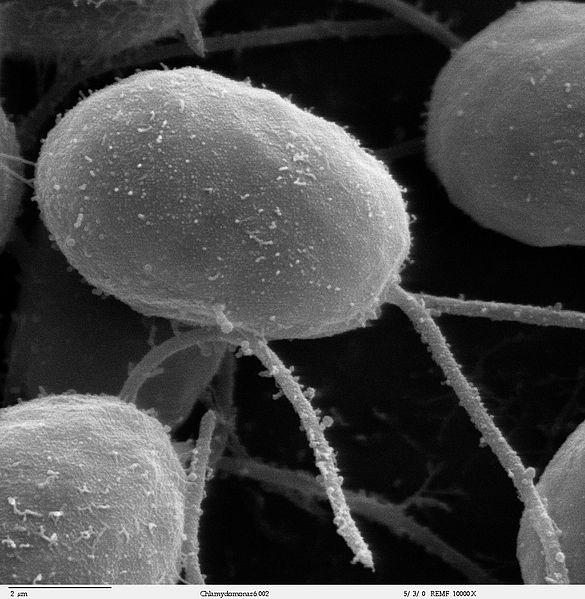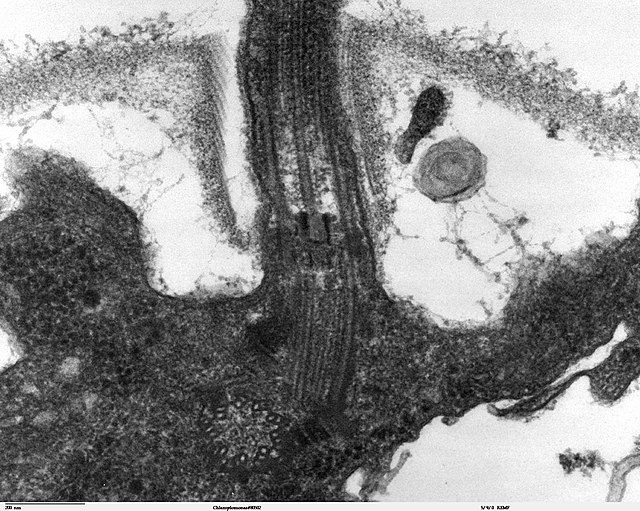Flagellins are a family of proteins present in flagellated bacteria which arrange themselves in a hollow cylinder to form the filament in a bacterial flagellum. Flagellin has a mass on average of about 40,000 daltons. Flagellins are the principal component of bacterial flagella that have a crucial role in bacterial motility.
Helicobacter pylori electron micrograph, showing multiple flagella on the cell surface
A flagellum is a hairlike appendage that protrudes from certain plant and animal sperm cells, from fungal spores (zoospores), and from a wide range of microorganisms to provide motility. Many protists with flagella are known as flagellates.
SEM image of flagellated eukaryote Chlamydomonas sp. (10000×)
Bacterial flagellar motor assembly: Shown here is the C-ring at the base with FliG in red, FliM in yellow, and FliN in shades of purple; the MS-ring in blue; the MotAB in brown; the LP-ring in pink; and the rod in gray.
Longitudinal section through the flagella area in Chlamydomonas reinhardtii. In the cell apex is the basal body that is the anchoring site for a flagellum. Basal bodies originate from and have a substructure similar to that of centrioles, with nine peripheral microtubule triplets (see structure at bottom center of image).
The "9+2" structure is visible in this cross-section micrograph of an axoneme.





